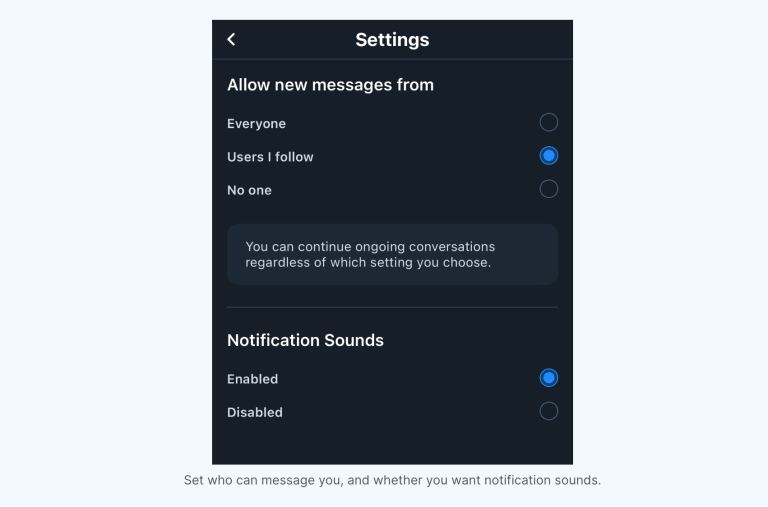Bluesky DMs are here, further proof that every social media app eventually morphs into each other. However, after reading into the company’s announcement, I’d really take caution in using the company’s new direct messages feature to send a message to your crush like Bluesky recommends.
So, who can message you? The company says that by default, only people you follow on the social media service can send you a direct message. Thankfully, you do have a few options you can choose from to change these permissions. Under settings, you can allow DMs from:
- No one
- Users I follow
- Everyone

Of course, blocked users will not be able to send you a direct message, but muted users will. That seems perfectly normal. However, things get a little weird when the company talks about accessing your DMs due to a report from a user or a more widespread issue.
BlueSky DMs are not encrypted
The company says that, if you report a DM, “Moderators are able to view the reported message and surrounding messages for context to assess the report.” It currently provides no information on how many surrounding messages moderators will have access to when handling reports like this.
You can report DMs directly to mods, who will review reported messages for Community Guidelines violations. Moderators are able to view the reported message and surrounding messages for context to assess the report. Infractions may result in temporary or permanent loss of DM privileges or even full account takedowns.
Things get even less clear when the company talks about accessing DMs to “investigate broader patterns of abuse, such as spam or coordinated harassment.” Bluesky says it can access anyone’s DMs and we’re all going to have to trust that they’ll hold to their promise of only doing so when “absolutely necessary.” What constitutes absolutely necessary? That’s still unclear.
In rare cases, the Bluesky moderation team may need to open your DMs to investigate broader patterns of abuse, such as spam or coordinated harassment. This would only be done when absolutely necessary to keep Bluesky safe. Access is extremely limited and tracked internally.
If you actually do want to send a direct message on Bluesky, here’s how to do it:
- Click the Chat icon. On mobile, you can find the icon at the bottom of your screen. On desktop, this is a chat bubble on the side bar (or go to https://bsky.app/messages).
- On mobile, click the plus icon to start a new conversation. On desktop, click “New chat” in the top right to start a new conversation. Search for the user you want to message.
- Write your message, and hit send!
- If the app says a user cannot be messaged, they may have set their account to only allow messages from people they follow or from no one.
Thankfully, the company is planning on bringing encryption to direct messages in the future, but it’s currently unclear when that will be rolling out:
- Media in DMs: Currently, Bluesky DMs allow you to send text messages. In the future, you’ll be able to send images and other forms of media!
- Group DMs: In the future, you’ll be able to create direct messages for groups.
- Encrypted DMs: We intend to fully support end-to-end encrypted messaging down the line. Read more about our technical plans for E2EE messaging in our 2024 protocol roadmap.
- Safety improvements: We’ll continue iterating on anti-harassment and safety tooling for direct messages.
Until that rolls out, remember that Bluesky will have access to all of your direct messages. But don’t worry! It’s only if it really needs to. I still don’t know exactly who decides that and if you get notified of the intrusion, but hey, DMs are here!








